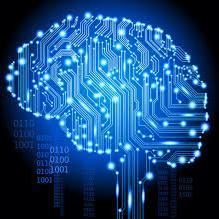The growing carbon footprint of artificial intelligence (AI) models, especially large ones such as GPT-3 and GPT-4, has been undergoing public scrutiny. Unfortunately, however, the equally important and enormous water footprint of AI models has remained under the radar. For example, training GPT-3 in Microsoft's state-of-the-art U.S. data centers can directly consume 700,000 liters of clean freshwater (enough for producing 370 BMW cars or 320 Tesla electric vehicles) and the water consumption would have been tripled if training were done in Microsoft's Asian data centers, but such information has been kept as a secret. This is extremely concerning, as freshwater scarcity has become one of the most pressing challenges shared by all of us in the wake of the rapidly growing population, depleting water resources, and aging water infrastructures. To respond to the global water challenges, AI models can, and also should, take social responsibility and lead by example by addressing their own water footprint. In this paper, we provide a principled methodology to estimate fine-grained water footprint of AI models, and also discuss the unique spatial-temporal diversities of AI models' runtime water efficiency. Finally, we highlight the necessity of holistically addressing water footprint along with carbon footprint to enable truly sustainable AI.
翻译:人工智能(AI)模型的碳足迹不断增长,特别是大型模型,如 GPT-3 和 GPT-4,一直受到公众的关注。然而,同样重要且巨大的是 AI 模型的水足迹,却一直没有引起足够的关注。例如,在微软最先进的美国数据中心中训练 GPT-3,可以直接消耗 700,000 升清洁淡水(相当于生产 370 辆宝马汽车或 320 辆特斯拉电动汽车的用水量),如果在微软的亚洲数据中心中进行训练,则水消耗量将增加三倍,但此类信息一直被保密。这极其令人担忧,因为淡水短缺已成为在人口快速增长、水资源减少和老化水基础设施的背景下我们需要面对的最紧迫的挑战之一。为了应对全球的水资源挑战,人工智能模型应该并且可以承担社会责任,以身作则,解决自身的水足迹问题。本文提供了一个基于原则的方法来估算 AI 模型的细粒度水足迹,并讨论了 AI 模型运行时间水利效率的独特时空多样性。最后,本文强调了必须全面解决水足迹和碳足迹,才能实现真正可持续的 AI。



